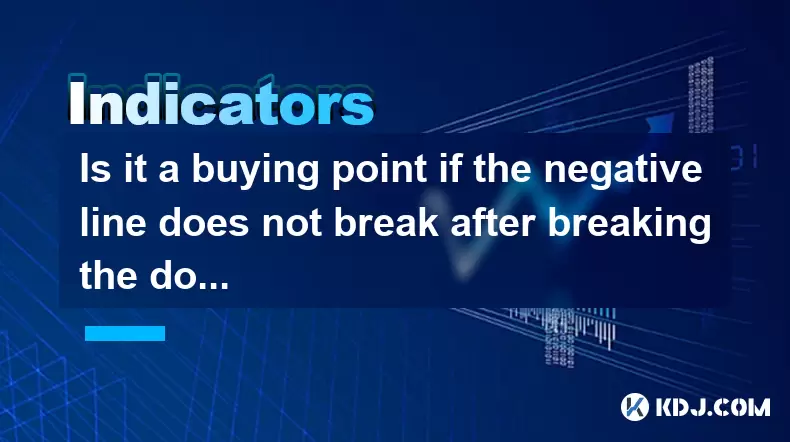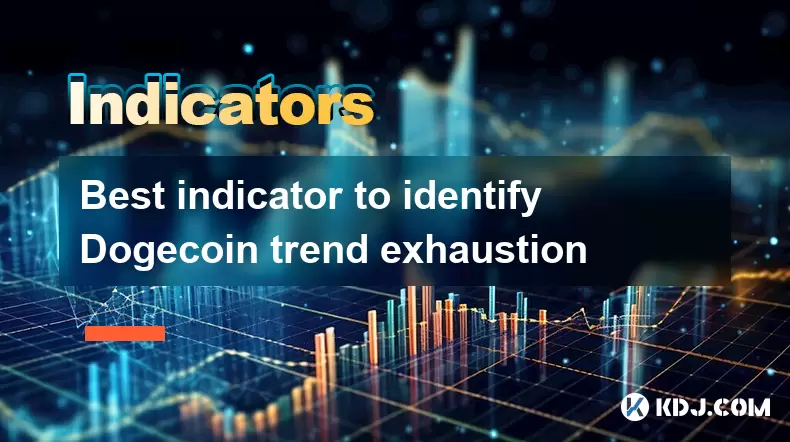-
 Bitcoin
Bitcoin $108,980.7358
0.74% -
 Ethereum
Ethereum $2,571.0926
1.93% -
 Tether USDt
Tether USDt $1.0002
-0.02% -
 XRP
XRP $2.2667
1.60% -
 BNB
BNB $661.7100
0.93% -
 Solana
Solana $151.4189
2.27% -
 USDC
USDC $1.0000
-0.01% -
 TRON
TRON $0.2878
1.42% -
 Dogecoin
Dogecoin $0.1739
6.04% -
 Cardano
Cardano $0.5858
1.83% -
 Hyperliquid
Hyperliquid $39.9185
2.35% -
 Sui
Sui $2.9139
0.69% -
 Bitcoin Cash
Bitcoin Cash $497.2075
2.19% -
 Chainlink
Chainlink $13.6101
2.97% -
 UNUS SED LEO
UNUS SED LEO $9.0469
0.30% -
 Stellar
Stellar $0.2510
5.54% -
 Avalanche
Avalanche $18.2271
1.85% -
 Toncoin
Toncoin $2.8336
3.53% -
 Shiba Inu
Shiba Inu $0.0...01179
3.07% -
 Hedera
Hedera $0.1595
4.34% -
 Litecoin
Litecoin $87.7262
0.69% -
 Monero
Monero $320.3380
1.76% -
 Polkadot
Polkadot $3.4007
1.84% -
 Dai
Dai $1.0000
-0.01% -
 Ethena USDe
Ethena USDe $1.0000
-0.04% -
 Bitget Token
Bitget Token $4.4321
1.03% -
 Uniswap
Uniswap $7.4250
1.33% -
 Aave
Aave $286.5818
5.00% -
 Pepe
Pepe $0.0...01014
5.26% -
 Pi
Pi $0.4652
3.86%
Is it a buying point if the negative line does not break after breaking the downward trend line?
A broken downward trend line in crypto trading may signal weakening sell pressure, but if momentum indicators remain bearish, conflicting signals suggest caution and need for confirmation.
Jul 01, 2025 at 03:14 am

Understanding the Context of Trend Lines in Cryptocurrency Trading
In cryptocurrency trading, trend lines play a crucial role in identifying potential reversal points or continuation signals. A downward trend line is drawn by connecting at least two lower highs and is considered broken when the price moves above this line. However, the situation becomes more complex when the negative line does not break after breaking the downward trend line.
This scenario raises an important question: Is it a buying opportunity? To analyze this, we must understand how trend lines interact with other technical indicators and what they imply about market psychology.
Important: The behavior of prices near trend lines often reflects the balance between buyers and sellers.
What Happens When the Downward Trend Line Is Broken?
When a downward trend line is broken, it typically signals that the selling pressure may be weakening. This can be interpreted as a possible bullish reversal. However, if the negative line (possibly referring to a moving average or momentum indicator) does not break along with the trend line, it suggests conflicting signals.
- Price breaks upward
- Momentum or moving averages remain bearish
- Market participants are divided
This divergence indicates that while some traders see value and begin buying, others remain skeptical or continue selling on rallies.
Important: Divergence between price action and indicators can signal uncertainty in the market.
How to Confirm If It's a Valid Buying Point
Before entering a trade based on such a setup, confirmation is key. Here’s a detailed breakdown of steps you should take:
- Analyze volume – Look for increased volume during the breakout above the trend line. Low volume may suggest weak conviction.
- Check multiple time frames – Ensure higher time frame charts (e.g., daily or weekly) support the bullish bias.
- Observe candlestick patterns – Strong bullish candles like engulfing patterns or hammers can confirm strength.
- Monitor key resistance levels – Determine whether the price is approaching a major overhead supply zone.
- Watch for retest – A successful retest of the broken trend line as new support adds validity to the breakout.
Important: No single signal should be used in isolation; always seek confluence with other tools.
Interpreting the Negative Line Behavior
The phrase “negative line” could refer to various elements depending on context:
- MACD negative line (signal line) – If the MACD line crosses above the signal line after a downtrend, it might indicate strengthening momentum.
- Moving Average crossover – For example, the 50-day MA still below the 200-day MA creates a "death cross" scenario even if price breaks up.
- Ichimoku Cloud analysis – If price breaks the trend line but remains below the cloud, bearish bias persists.
Each interpretation affects how traders assess the strength of the breakout. If the negative line remains intact, it implies that longer-term sentiment hasn’t shifted yet.
Important: Technical indicators should align with price action to increase confidence in a trade setup.
Practical Steps to Evaluate the Trade Setup
Here’s a step-by-step guide to evaluating whether this pattern presents a valid buying point:
- Identify the trend line clearly – Ensure it has been touched at least twice and shows a consistent angle.
- Mark the breakout level – Wait for a clear close above the trend line, ideally with strong volume.
- Assess the position relative to key moving averages – If price is still below major MAs, caution is warranted.
- Use oscillators to check overbought/oversold conditions – Tools like RSI or Stochastic can help determine if the move is sustainable.
- Set stop-loss and target levels – Place stops just below the trend line or recent swing low. Targets can be based on Fibonacci extensions or prior resistance zones.
Important: Risk management is essential, especially when dealing with mixed signals.
Frequently Asked Questions
Q1: What does it mean when the price breaks a downtrend line but the MACD remains bearish?
A: This indicates a potential false breakout. While price action suggests bullishness, the lack of momentum support from MACD implies that the trend may not have fully reversed yet.
Q2: Should I enter a trade immediately after the trend line is broken?
A: It's generally safer to wait for confirmation through a retest or additional bullish candlesticks before entering. Immediate entry increases the risk of being caught in a fakeout.
Q3: Can I use candlestick patterns alone to confirm this type of breakout?
A: Candlestick patterns are powerful but should be used in combination with other tools like volume, moving averages, or Fibonacci retracement levels for better accuracy.
Q4: How long should I wait for the negative line to catch up after a trend line breakout?
A: There's no fixed timeframe. Some reversals take days, others weeks. Monitor the alignment of indicators across multiple timeframes and avoid rushing into trades without confirmation.
Disclaimer:info@kdj.com
The information provided is not trading advice. kdj.com does not assume any responsibility for any investments made based on the information provided in this article. Cryptocurrencies are highly volatile and it is highly recommended that you invest with caution after thorough research!
If you believe that the content used on this website infringes your copyright, please contact us immediately (info@kdj.com) and we will delete it promptly.
- Pi Network Price Prediction: Is $1,000 Realistic?
- 2025-07-07 14:30:13
- Cryptocurrency Fraud: Secret Service Issues Warning Amidst Rising Scams
- 2025-07-07 14:30:13
- XRP Price & Bitcoin to $3.4M by 2030? A NYC Perspective
- 2025-07-07 14:50:12
- Elon Musk's America Party & Bitcoin: A New York Minute on a Political Earthquake
- 2025-07-07 14:50:12
- Trump, BRICS, and Bitcoin Volatility: A Wild Ride in the Crypto World
- 2025-07-07 14:55:12
- Cathie Wood, Bitcoin, and Government Settlements: Decoding the Latest Crypto Mystery
- 2025-07-07 15:10:12
Related knowledge

How to trade Dogecoin based on funding rates and open interest
Jul 07,2025 at 02:49am
Understanding Funding Rates in Dogecoin TradingFunding rates are periodic payments made to either long or short traders depending on the prevailing market conditions. In perpetual futures contracts, these rates help align the price of the contract with the spot price of Dogecoin (DOGE). When funding rates are positive, it indicates that long positions p...

How to spot manipulation on the Dogecoin chart
Jul 06,2025 at 12:35pm
Understanding the Basics of Chart ManipulationChart manipulation in the cryptocurrency space, particularly with Dogecoin, refers to artificial price movements caused by coordinated trading activities rather than genuine market demand. These manipulations are often executed by large holders (commonly known as whales) or organized groups aiming to mislead...

Bitcoincoin market structure break explained
Jul 07,2025 at 02:51am
Understanding the Dogecoin Market StructureDogecoin, initially created as a meme-based cryptocurrency, has evolved into a significant player in the crypto market. Its market structure refers to how price action is organized over time, including support and resistance levels, trend lines, and patterns that help traders anticipate future movements. A mark...

What is the significance of a Dogecoin engulfing candle pattern
Jul 06,2025 at 06:36am
Understanding the Engulfing Candle Pattern in CryptocurrencyThe engulfing candle pattern is a significant technical analysis tool used by traders to identify potential trend reversals in financial markets, including cryptocurrencies like Dogecoin. This pattern typically consists of two candles: the first one is relatively small and indicates the current...

Best indicator to identify Dogecoin trend exhaustion
Jul 07,2025 at 11:29am
Understanding Dogecoin Trend ExhaustionIdentifying trend exhaustion in Dogecoin (DOGE) is crucial for traders aiming to avoid late entries or potential reversals. Trend exhaustion occurs when a prevailing price movement loses momentum, often leading to a consolidation phase or reversal. In the volatile world of cryptocurrencies like Dogecoin, understand...

Dogecoin monthly chart analysis for long term investors
Jul 06,2025 at 10:08am
Understanding the Dogecoin Monthly ChartFor long-term investors, analyzing the monthly chart of Dogecoin (DOGE) provides a macro view of its price behavior over extended periods. The monthly chart captures major trends, key resistance and support levels, and potential reversal zones that are crucial for strategic investment planning. Unlike daily or hou...

How to trade Dogecoin based on funding rates and open interest
Jul 07,2025 at 02:49am
Understanding Funding Rates in Dogecoin TradingFunding rates are periodic payments made to either long or short traders depending on the prevailing market conditions. In perpetual futures contracts, these rates help align the price of the contract with the spot price of Dogecoin (DOGE). When funding rates are positive, it indicates that long positions p...

How to spot manipulation on the Dogecoin chart
Jul 06,2025 at 12:35pm
Understanding the Basics of Chart ManipulationChart manipulation in the cryptocurrency space, particularly with Dogecoin, refers to artificial price movements caused by coordinated trading activities rather than genuine market demand. These manipulations are often executed by large holders (commonly known as whales) or organized groups aiming to mislead...

Bitcoincoin market structure break explained
Jul 07,2025 at 02:51am
Understanding the Dogecoin Market StructureDogecoin, initially created as a meme-based cryptocurrency, has evolved into a significant player in the crypto market. Its market structure refers to how price action is organized over time, including support and resistance levels, trend lines, and patterns that help traders anticipate future movements. A mark...

What is the significance of a Dogecoin engulfing candle pattern
Jul 06,2025 at 06:36am
Understanding the Engulfing Candle Pattern in CryptocurrencyThe engulfing candle pattern is a significant technical analysis tool used by traders to identify potential trend reversals in financial markets, including cryptocurrencies like Dogecoin. This pattern typically consists of two candles: the first one is relatively small and indicates the current...

Best indicator to identify Dogecoin trend exhaustion
Jul 07,2025 at 11:29am
Understanding Dogecoin Trend ExhaustionIdentifying trend exhaustion in Dogecoin (DOGE) is crucial for traders aiming to avoid late entries or potential reversals. Trend exhaustion occurs when a prevailing price movement loses momentum, often leading to a consolidation phase or reversal. In the volatile world of cryptocurrencies like Dogecoin, understand...

Dogecoin monthly chart analysis for long term investors
Jul 06,2025 at 10:08am
Understanding the Dogecoin Monthly ChartFor long-term investors, analyzing the monthly chart of Dogecoin (DOGE) provides a macro view of its price behavior over extended periods. The monthly chart captures major trends, key resistance and support levels, and potential reversal zones that are crucial for strategic investment planning. Unlike daily or hou...
See all articles

























































































